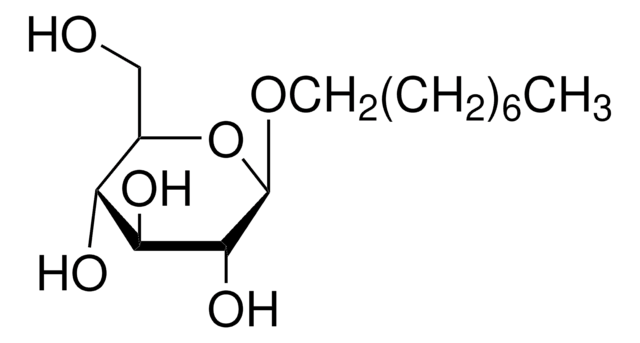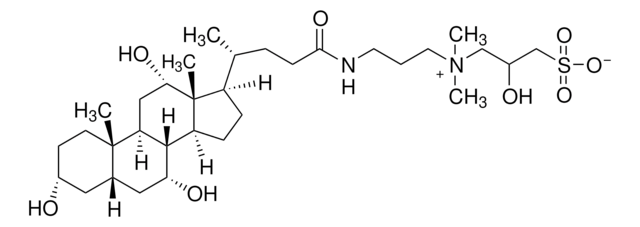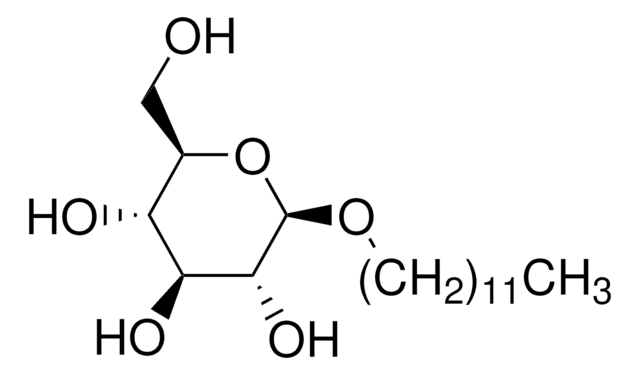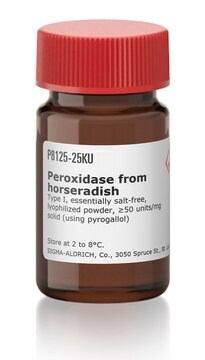O3757
Octyl β-D-glucopyranoside solution
≥95% (HPLC), 50 % (w/v) in H2O
Sinonimo/i:
n-Octyl glucoside, OGP
About This Item
Prodotti consigliati
Descrizione
non-ionic
Saggio
≥95% (HPLC)
PM
average mol wt 24500-25000
Concentrazione
50 % (w/v) in H2O
Numero d'aggregazione
84
CMC
20-25
Temp. transizione
cloud point ≥100
applicazioni
detection
Temperatura di conservazione
−20°C
Stringa SMILE
CCCCCCCCO[C@@H]1O[C@H](CO)[C@@H](O)[C@H](O)[C@H]1O
InChI
1S/C14H28O6/c1-2-3-4-5-6-7-8-19-14-13(18)12(17)11(16)10(9-15)20-14/h10-18H,2-9H2,1H3/t10-,11-,12+,13-,14-/m1/s1
HEGSGKPQLMEBJL-RKQHYHRCSA-N
Applicazioni
Note legali
Codice della classe di stoccaggio
10 - Combustible liquids
Classe di pericolosità dell'acqua (WGK)
WGK 3
Punto d’infiammabilità (°F)
Not applicable
Punto d’infiammabilità (°C)
Not applicable
Certificati d'analisi (COA)
Cerca il Certificati d'analisi (COA) digitando il numero di lotto/batch corrispondente. I numeri di lotto o di batch sono stampati sull'etichetta dei prodotti dopo la parola ‘Lotto’ o ‘Batch’.
Possiedi già questo prodotto?
I documenti relativi ai prodotti acquistati recentemente sono disponibili nell’Archivio dei documenti.
I clienti hanno visto anche
Il team dei nostri ricercatori vanta grande esperienza in tutte le aree della ricerca quali Life Science, scienza dei materiali, sintesi chimica, cromatografia, discipline analitiche, ecc..
Contatta l'Assistenza Tecnica.











